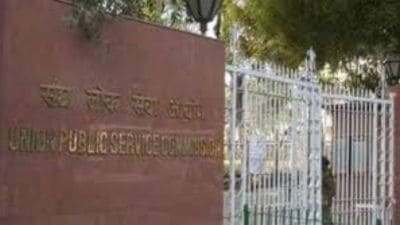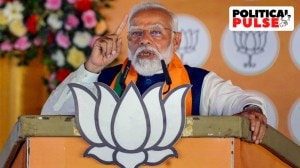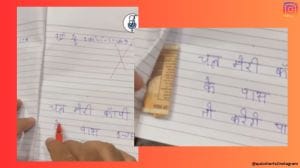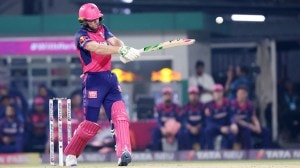- India
- International
The CM hopefuls who couldn’t wait
A Congress minister each in Maharashtra and Assam has resigned amid a tussle with the CM of his state. A look at their careers and ambitions.
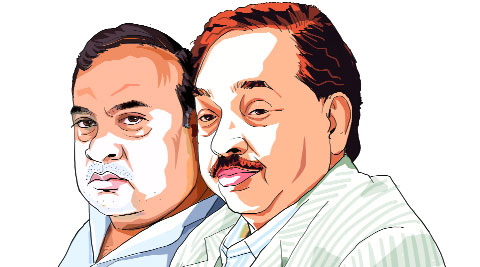 HIMANTA BISWA SARMA
HIMANTA BISWA SARMAand NARAYAN RANE
NARAYAN RANE: Strongman who frequently attacks those in power
Narayan Rane, 62, has always been outspoken, something that has worked both for and against him. One outburst against then Maharashtra chief minister Manohar Joshi led to the Shiv Sena replacing Joshi with Rane, who remained chief minister for all of eight months from December 1998 before the Sena-BJP lost in the subsequent elections. In the Congress, he has been made to pay for outbursts, one against Sonia Gandhi leading to his expulsion before the party reinducted him for want of strong leaders.
It has been an eventful life within and outside politics since he arrived from the coastal region of Konkan to make a career in Mumbai. He started a roadside poultry in the badlands of Chembur, the eastern suburb of Mumbai, and earned such notoriety that then Shiv Sena chief Bal Thackeray referred to him as an ordinary thug. Later, it would be Thackeray who would appoint him chief minister.
“Tell me Narya when you roamed the streets of Chembur showing off your aggression, did you ever imagine that you will become Maharashtra’s chief minister?” Thackeray once said in an interview to Saamna, recounting a conversation with Rane. “He said no without thinking twice. ‘You have made me what I am today and I’d have been killed in an encounter had it not been for the Shiv Sena’.”
After the poultry business, Rane had joined the income tax department but his clout in Chembur ensured that Thackeray, looking for men with potential, inducted him into the Sena.

With Thackeray as mentor, he became a corporator in Bombay of the 1980s, then chairman of Bombay Electric Supply and Transport (BEST) which then had a budget of over Rs 1,500 crore. His adeptness with handling finances and raising money for the fledgling Sena drew him closer to Matoshree, the residence of the Thackeray family.
Rane was appointed one of the men who would expand the Sena’s footprint in Konkan. It was an effort that saw him being slapped with various cases, including of murder. This was after he had fought the assembly election from Kudal in 1990 and won. He was made an accused in the murder of Sindhudurg district Congress president Shreedhar Naik in 1991, and was later acquitted. A decade later came the murder of NCP Taluka president Satyavijay Bhise, for which close associates of Rane are facing trial.
“Recently during local corporation elections, goons were sent to the hostel of my daughter in Goa to intimidate me. This is the type of politics they want to practise,” says Sawantwadi MLA Deepak Kesarkar, who recently quit the NCP for the Sena, and who was once close to Rane but is now his bitter rival.
In 1995, the Sena rewarded Rane by making him minister for dairy development and fisheries, and later giving him revenue. But he had set his sights on higher things. Aware of a widening rift between Manohar Joshi and Bal Thackeray, Rane in 1998 fiercely criticised Joshi’s working style. Three months later, Rane became CM, helped also by his closeness to Raj Thackeray, then seen as number two in the Sena.
A former bureaucrat recalled the subsequent eight months: “For someone who is not highly educated, he has been a very diligent and informed minister.” Though the Sena-BJP lost in 1999, Rane had by then seen himself as a natural claimant to the CM’s chair. But the failing health of Bal Thackeray and the gradual emergence of his son Uddhav saw Rane being sidelined. Another outburst followed, with Rane questioning Uddhav’s leadership skills and walking out with 12 MLAs.
He joined the Congress, got reelected and was once again given charge of the lucrative revenue department. But his sights were still on the chair. He claims he had been promised the post within six months of his joining. But when a change of leadership came after the 26/11 attacks, Rane was passed over and Ashok Chavan made the CM. Rane launched a scathing attack on Sonia, saying he did not trust her. The Congress expelled him but reinstated him a few months later and handed him the ministry of industries.
After the Congress replaced Ashok Chavan with Prithviraj Chavan, Rane showed his frustration with potshots the new CM’s abilities. “Rane is a man in a hurry but he has overplayed his hand this time. He could not even get his son elected in the Lok Sabha elections,” a cabinet colleague said.
His sons former MP Nitesh and Nilesh, who runs an organisation called Swabhimaan, have been frequently accused of violence and high-handedness.
HIMANTA BISWA SARMA: ‘Dreamer’ who revels in the limelight
On Assam Chief Minister Tarun Gogoi’s website is a link to a page that gives a profile of Himanta Biswa Sarma. Under the subheading “Positions held in the past”, one learns that Sarma was three times general secretary of the Cotton College Union Society, member-secretary of the state-level advisory committee for student and youth welfare, central government standing counsel in the Gauhati High Court, general secretary of the Assam Youth Congress, and a secretary of the Assam PCC, before holding various portfolios as minister since Gogoi first first appointed him an MoS in June 2002.
What it does not mention is that Sarma was supposedly also a member of the ULFA, according to information given out by the outfit itself in December 2011. In a statement emailed to various media houses in Guwahati, the ULFA said Sarma had been a non-military cadre and left the organisation “because he lacked in-depth knowledge of the ULFA’s movement.”
Sarma then dismissed the claim as “madness” — “They have gone mad. Why this (claim) after 10 years?” Gogoi agreed: “If he was one of their colleagues, why have they waited for 10 years to make this claim? I do not think any cabinet minister was ever a member of the ULFA.”
For one reason or another, Sarma, 45, has constantly been in the limelight since his student days. A publication that photographically documents AASU’s anti-foreigner movement of 1979-85 has at least one picture where a shorts-clad Himanta stands prominently by the side of then AASU president Prafulla Kumar Mahanta.
The ambitious Sarma, whom his admirers not only find dynamic but also see in him a future chief minister, has often stayed close to people in power. He was close to Mahanta when he was chief minister, shifted allegiance to Hiteswar Saikia when the latter took over, and then got close to Gogoi as the latter returned to state politics in 1998.
His wife owns two leading TV channels in Guwahati, one of which was caught in a controversy in 2012 when it went almost live with visuals of a woman being molested on the streets of Guwahati. The couple also acquired a daily newspaper a couple of months ago.
In 2001, Sarma was elected to the assembly by defeating one of his mentors, Bhrigu Kumar Phukan. He was initially not in the list of ministers but was made a MoS in June 2002. In the next couple of years he rose to be Gogoi’s trusted lieutenant, was elevated to a cabinet minister in 2006, and given two important portfolios — health as well as education — in the third consecutive government headed by Gogoi.
In 2012, Sarma for the first time made it clear that he cherished a dream of becoming the chief minister. He first disclosed his “dream” on social media, prompting Gogoi to ask him to stop dreaming and start working. Soon, Sarma also described Gogoi as a “setting sun”, that too when the chief minister was undergoing a critical cardiac surgery in Mumbai.
Later the same year, Sarma suddenly found a competitor; Gogoi had introduced his son Gaurav in politics, and entrusted Forest Minister Rakibul Hussain to take him around in Kaliabor, from where Gaurav was elected to Lok Sabha in May.
As Lok Sabha elections drew closer, Sarma started saying in private that with Gogoi at the helm the Congress would not get more than four seats (out of 14) in Assam. Today, even as he resigned and claimed that his prediction had come true, Sarma made a fresh prediction: that under Gogoi, the Congress tally in the next (2016) assembly election will be reduced to a single digit.
Apr 16: Latest News
- 01
- 02
- 03
- 04
- 05











